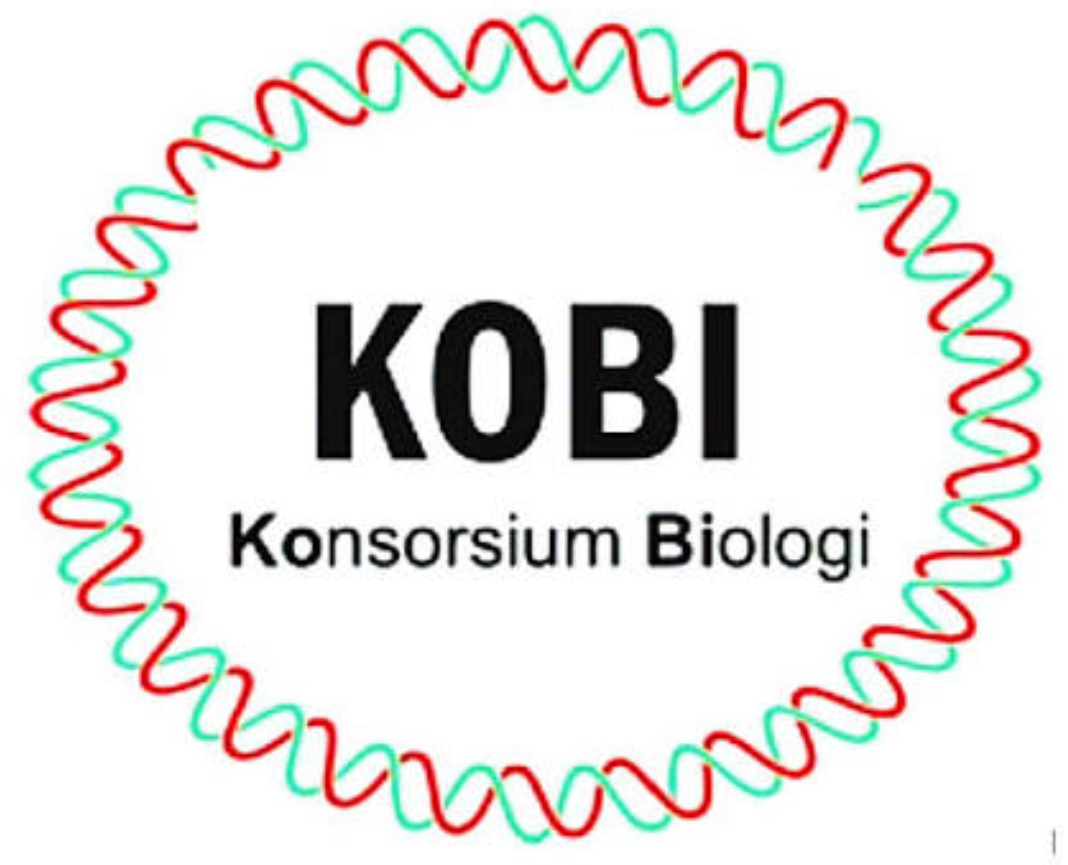Title:
Isolation and Characterization of Endophytic Bacteria in Ciplukan Plant (Physalis angulata)
Author:
Abstract
Biodiversity of endophytic bacteria is a potential biological resource to be applied in various fields, especially in the medical field. Endophytic bacteria are bacteria that live in the host plant tissues which belongs to a symbiosis of mutualism. Ciplukan plant (Physalis angulata) is a herbal plant that is useful as antihyperglycemic, antimicrobe, immunostimulant, anti-inflammatory, antioxidant, and cytotoxic. Active compounds obtained from plants need a more complicated time and process compared to extracting compounds from bacteria. The study aims to obtain isolates and characterization of endophytic bacteria in Ciplukan plant (Physalis angulata). The method that is used is the isolation of microbe by Nutrient Agar (NA), and morphological characterization with a gram staining technique. The result of isolation of endophytic bacteria in Ciplukan plant (Physalis angulata) obtains the data which the highest mean is in the rhizosphere part that is 13.13 x 106. Isolation of a single colony of endophytic bacteria obtains 20 bacterial isolates which are 12 bacterial isolates of Gram-positive and 8 bacterial isolates of Gram-negative. The result of isolation of a single colony obtains 1 bacterial isolate of endophytic root (AC2) that has characteristic as Actinobacteria which has a form of spherical spore of colony and Gram-positive. Actinobacteria colonies grow by attached to the surface of the media and can produce spores such as powder. Metabolite compounds produced by Actinobacteria have the role of inhibiting the growth of bacteria and fungi. Furthermore, the metabolites produced by Actinomycetes are widely developed as medicinal materials that can cope with various diseases.
Keywords
Full Text:
PDFReferences
Bacon CW, Hinton DM. 2006. Bacterial endophytes : the endophytic niche, its occupants, and its utility. Di dalam : Gnanamanickam SS, editor. Plant-Associated Bacteria. Netherland : Springer.
Baedowi, 1998, Timbunan Glikogen dalam Hepatosit dan Kegiatan Sel Beta Insula Pancreatisi Tikus Putih (Rattus norvegicus) Akibat Pemberian Ekstrak Daun Ciplukan, Penelitian Tanaman Obat di Beberapa Perguruan Tinggi di Indonesia IX, Departemen Kesehatan RI, Jakarta, 139.
Beck HC, Hansen AM, Lauritsen FR. Novel pyrazine metabolites found in polymyxin biosynthesis by Paenibacilluspolymyxa. FEMS Microbiol Lett. 2003; (220):67–73. Dalam: Ryan RP, Germaine K, Franks A, Ryan DJ, Dowling DN. Bacterial endophytes: recent developments and applications Mini Review. FEMS Microbiol Lett. 2008;(278): 1–9.
Bhore SJ, Sathisha G. 2010. Screening of endophytic colonizing bacteria for cytokinin-like compounds: crude cell-free broth of endophytic colonizing bacteria is unsuitable in cucumber cotyledon bioassay. World J. Agric. Sci. 6 (4): 345-352.
Castillo UF, Strobel GA, Ford EJ. Munumbicins, wide-spectrum antibiotics produced by Streptomyces NRRL30562, endophytic on Kennedia nigriscans.Microbiology. 2002.(148):2675-2685.
Guan SH, Sattler I, Lin WH, Guo DA, Grabley S. p-Aminoacetophenonic acids produced by a mangroveendophyte: Streptomyces griseus subspecies. J Nat Prod. 2005; 68:1198–200. Dalam: Ryan RP, Germaine K, Franks A, Ryan DJ, Dowling DN. 2008. Bacterial endophytes: recent developments and applications Mini Review. FEMS Microbiol Lett. 2008; (278):1–9.
Hadioetomo, R. S. 1993. Mikrobiologi dasar dalam praktek teknik dan prosedur dasar laboratorium. Penerbit Gramedia, Jakarta
Hallmann, J. 2001. Plant Interactions with Endophytic Bacteria. In: Jeger, M.J. & N.J. Spence (Eds) Biotic Interactions in Plant–Pathogen Associations, CABI Publishing, Wallingford, United Kingdom, pp 87-119
Januário, Filho, Petro, Kashima, Sato, and França, 2000, Antimycobacterial Physalins from Physalis angulata L. (Solanaceae), Phytotherapy Res, 16(5): 445 – 448.
Khamna, S., Yokota, A., & Lumyong, S., 2009, Antifungal Activity of Streptomyces spp. Isolated from Rhizosphere of Thai medicinal plant, International Journal of Integrative Biology, 6 (3), 143 – 147.
Kiyomizu K, Yagi T, Yoshida H, Minami R, Tanimura A, Karasuno T, Hiraoka A. 2008. Fuliminant negatif c of Bacillus cereus resistant to carbapenem in a patient with biphenotypic acute leukemia. J. Infect. Chemother. 14: 361–367.
Krieg, N.R. and Holt. 1994. Bergey’s Manual of Determinative Bacteriology. William and Wilkins, London. P. 605-675.
Nurkanto, A., Listyaningsih, F., Julistiono., & Agusta, A., 2010, Eksplorasi Keanekaragaman Aktinomycetes Tanah Ternate Sebagai Sumber Antibiotik, Jurnal Biologi Indonesia, 6 (3), 325-339.
Ruhe JJ, Monson T, Bradsher, RW, Menon A. 2005. Use of Long-Acting Tetracyclines for Methicillin-Resistant Staphylococcus aureus Infections: Case Series and Review of the Literature. Clin. Inf. Dis. 40:1429–1434.
Savini V, Favaro M, Fontana C, Catavitello C, Balbinot A, Talia M, Febbo F, D’Antonio D. 2009. Bacillus cereus heteroresistant to carbapenems in a cancer patient. J. Hosp. Infect. 71:288–290.
Simanjuntak P, Bustanussalam, Otovina DM, Rahayuningsih M, Said EG. 2004. Isolasi dan identifikasi artemisinin dari hasil kultivasi mikroba endofit dari tanaman Artemisia annua. [studi mikroba endofitik tanaman Artemisia spp.]. Majalah Farmasi Indonesia. 15(2): 68-74.
Simarmata R, Lekatompessy S, Sukiman H. Isolasi mikroba endofitik dari tanaman obat sambung nyawa (Gymura procumbens) dan analisis potensinya sebagai antimikroba. Berk Penel Hayati. 2007; (13):85-90.
Strobel G, Daisy B, Castillo U, Harper J. Natural products from endophytic microorganisms.J Nat Prod. 2004;(67): 257– 68. Dalam: Ryan RP, Germaine K, Franks A, Ryan DJ, Dowling DN. Bacterial endophytes: recent developments and applications Mini Review. FEMS Microbiol Lett. 2008;(278): 1–9.
Sudarsono, A. 2008. Isolasi dan karakterisasi bakteri pada ikan laut dalam spesies ikan gindara (Lepidocibium flavobronneum). Skripsi. Bogor: Institut Pertanian Bogor.
Sunatmo, T. I. 2007. Eksperimen mikrobiologi dalam laboratorium. Penerbit Ardy Agency, Bogor.
Tanaka M, Sukiman H, Takebayashi M, Saito K, Suto M, Prana MS, Tomita F. isolation, screening and phylogenetic identification of endophytes from plants in Hokaido Japan and Java Indonesia. Microbes and Environment. 1999; 14(4):237–41.
Tammu Jyothibasu dan Ramana K.Venkata. 2014. Pharmacological Review On Physalis Species: A Potential Herbal Cure – All. World Journal Of Pharmaceutical Research. Vol. 4 No. 2. Desember 2014. Halaman 247256.
DOI: https://doi.org/10.31002/ijobe.v3i1.2293
Article Metrics
Abstract view : 136 timesPDF - 0 times
Cited By
Refbacks
- There are currently no refbacks.
Copyright (c) 2020 Indonesian Journal of Biology Education

This work is licensed under a Creative Commons Attribution-NonCommercial-ShareAlike 4.0 International License.

This work is licensed under a Creative Commons Attribution-NonCommercial-ShareAlike 4.0 International License.
indexed by :
Jalan Kapten Suparman 39 Magelang, Jawa Tengah, Indonesia 56116
Phone (0293) 364113 Fax (0293) 362438
Website: http://jurnal.untidar.ac.id/index.php/ijobe









 Abstract views : 136
|
Abstract views : 136
| PDF views : 0
PDF views : 0

